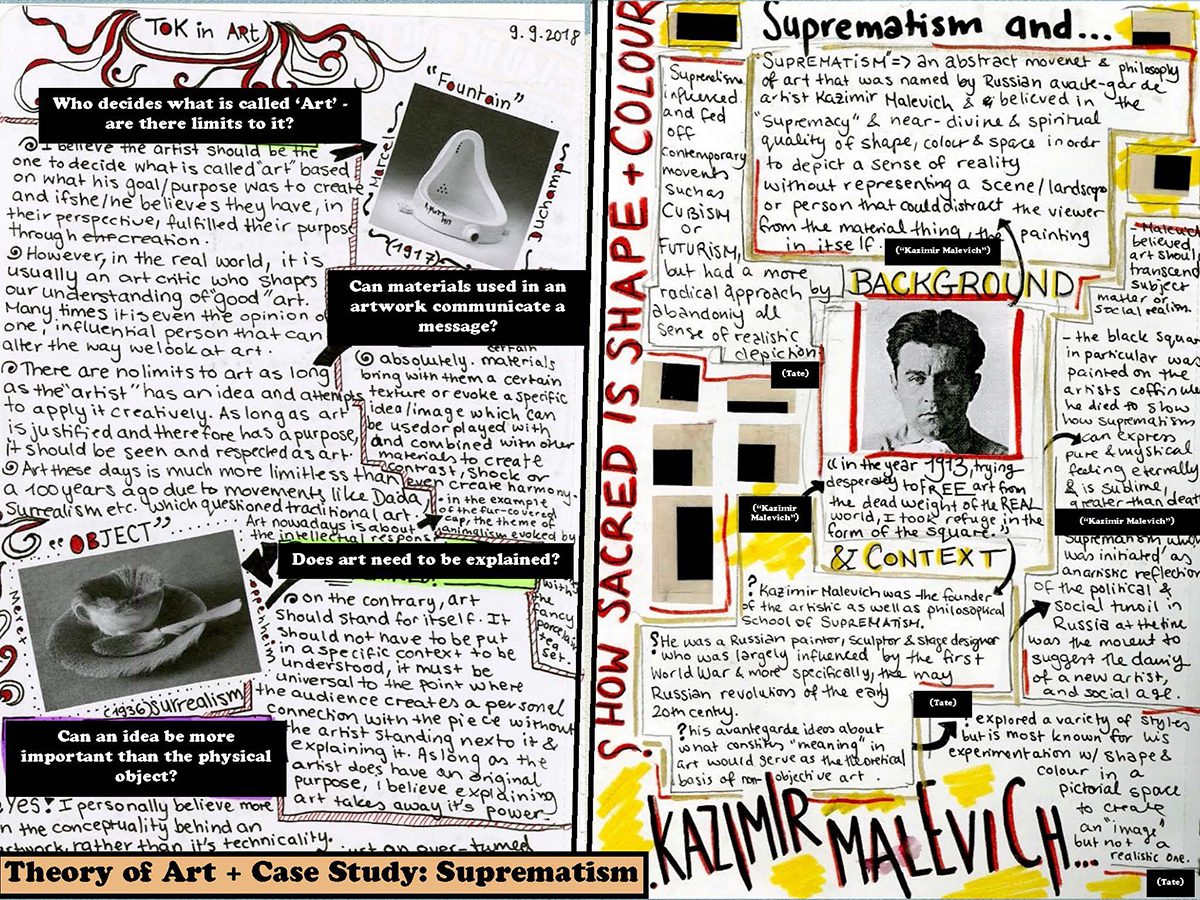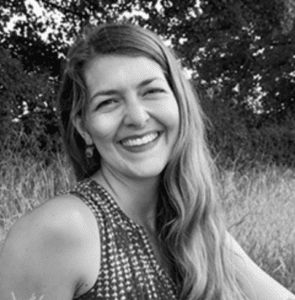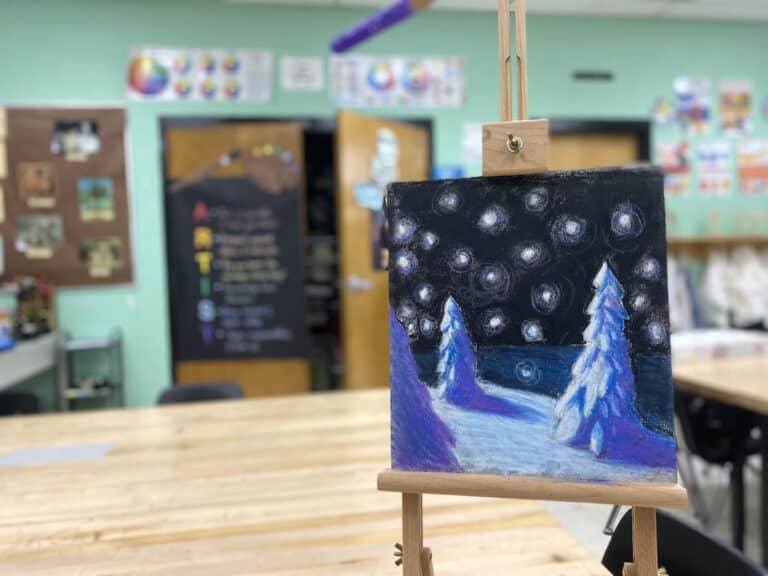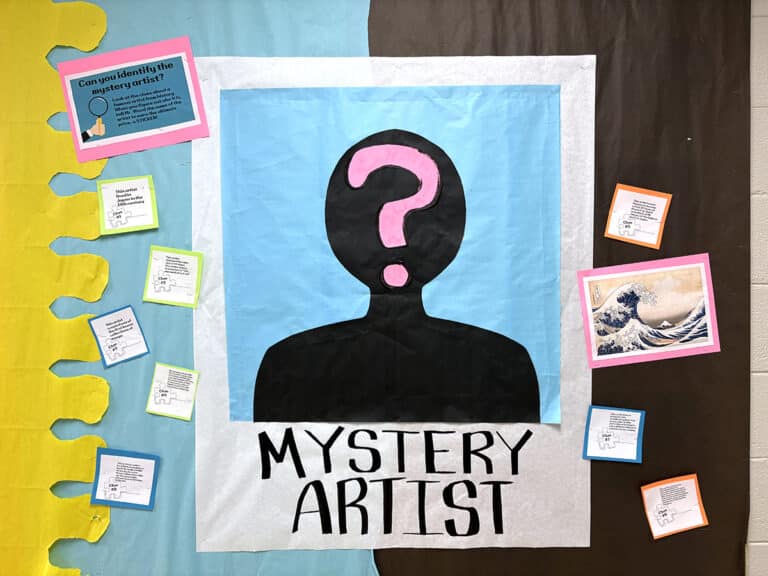Take a moment to reflect. When was the last time you actively used a visual journal? What did it look like for you? Did you take your visual journal with you everywhere you went? Maybe you scribbled ideas on restaurant napkins and glued them into a notebook. Or perhaps you used visual journal pages to test color palettes and experiment with compositional sketches. Possibly, you used your journal as a place for documenting the evolution of a single artwork. Like any visual arts practice, you already know using a visual journal requires developing good work habits.
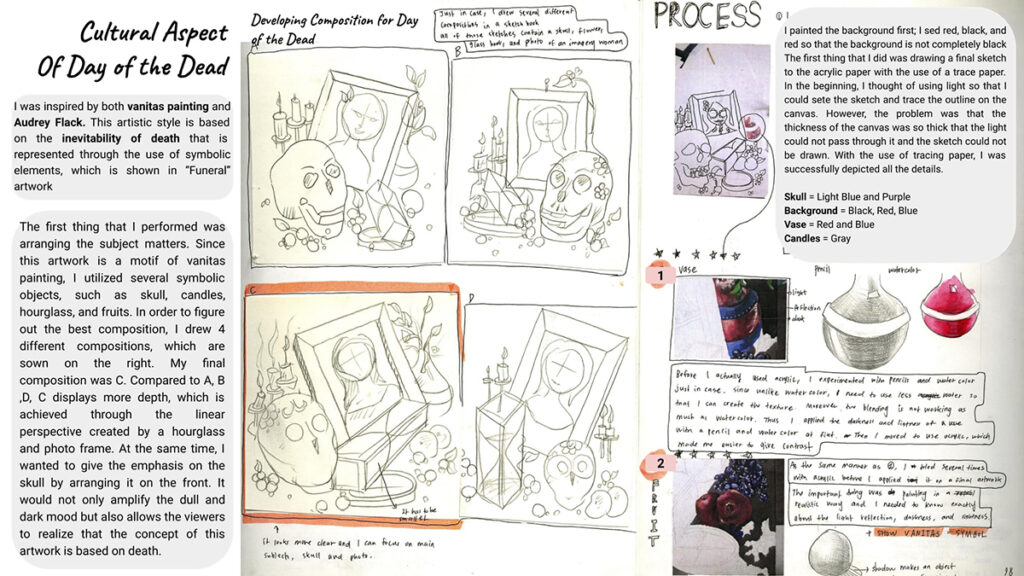
In International Baccalaureate (IB) Visual Arts, students engage with idea generation, experimentation, skill development, art analysis, and reflection in the Process Portfolio. Keeping a visual journal is encouraged. Students can record their discoveries while carrying out their explorations with the artistic process. The final Process Portfolio submission will include selecting pages from a student’s visual journal. It is an externally examined assessment task worth 40% of a student’s final examination score.
Some students entering your IB Visual Arts classroom may have used a visual journal in previous art classes. Others may be working within a visual journal for the first time. No matter their experience with visual journals, students will lean on you to support their work at the IB level. Even if you don’t currently teach IB Visual Arts or at the high school level in general, continue reading to learn five visual journal strategies that apply to most art classes.
Let’s digest the essential requirements, concepts, and criteria. Then, we will take a look at five visual journal strategies to support holistic student experiences.
Unpack the Process Portfolio at a glance.
The Process Portfolio requires students to experiment and develop skills using various media. Students will need to explore two-dimensional, three-dimensional, or lens-based and digital forms. The Process Portfolio task should last the duration of the two-year course. Students submit their Process Portfolio to IBO’s website as a digital PDF file in their second year. The deadlines are scheduled for April (northern hemisphere) and October (southern hemisphere). The requirements look different for students enrolled in the Standard Level (SL) or Higher Level (HL) course. Be sure to refer to the IB Visual Arts Guide to review detailed instructions and our overview article. The article features a download with an at-a-glance look at the assessment requirements.
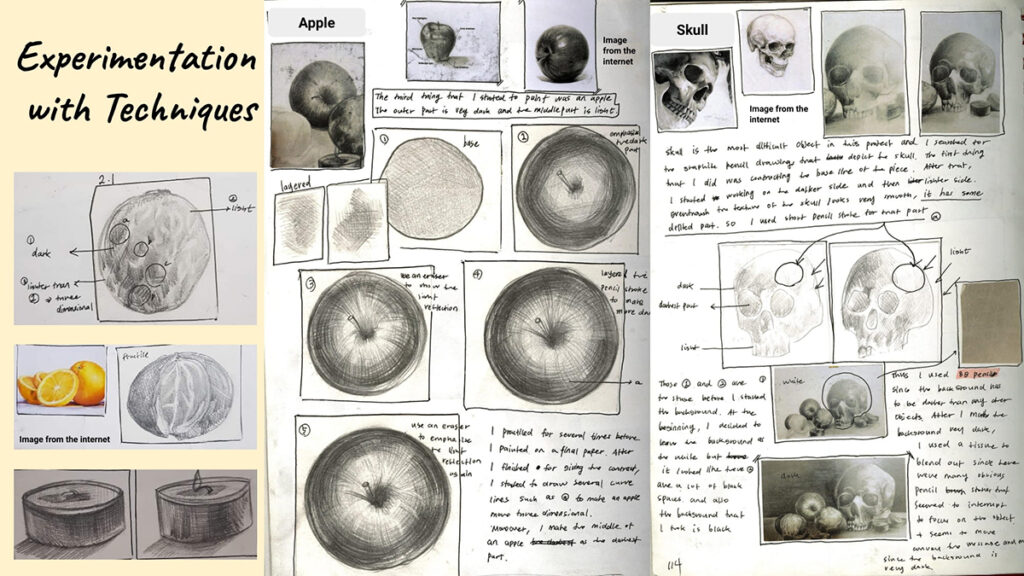
Understand the digital nature of the Process Portfolio.
As you look through the requirements of the Process Portfolio, you may have questions about “screens.” This phrasing refers to the final digital format of the assessment task and can be compared to a “slide.” Students can select the most robust examples from their visual journals to share.
There are many advantages to the digital submission format. Students can retype sections from their visual journal to highlight key ideas. Also, students can reformat snippets of their work from various visual journal pages into one digital screen. Students can also document screenshots of digital processes such as video or photo editing.
Many students use slideshow programs (PowerPoint, Slides, Keynote, etc.) to format their submissions. Your advanced students may want to play with more sophisticated design programs. Now that you understand a little more about the digital outcome, let’s briefly look at the criteria. Then, we will dig into some ways you can support visual journaling habits in your classroom.
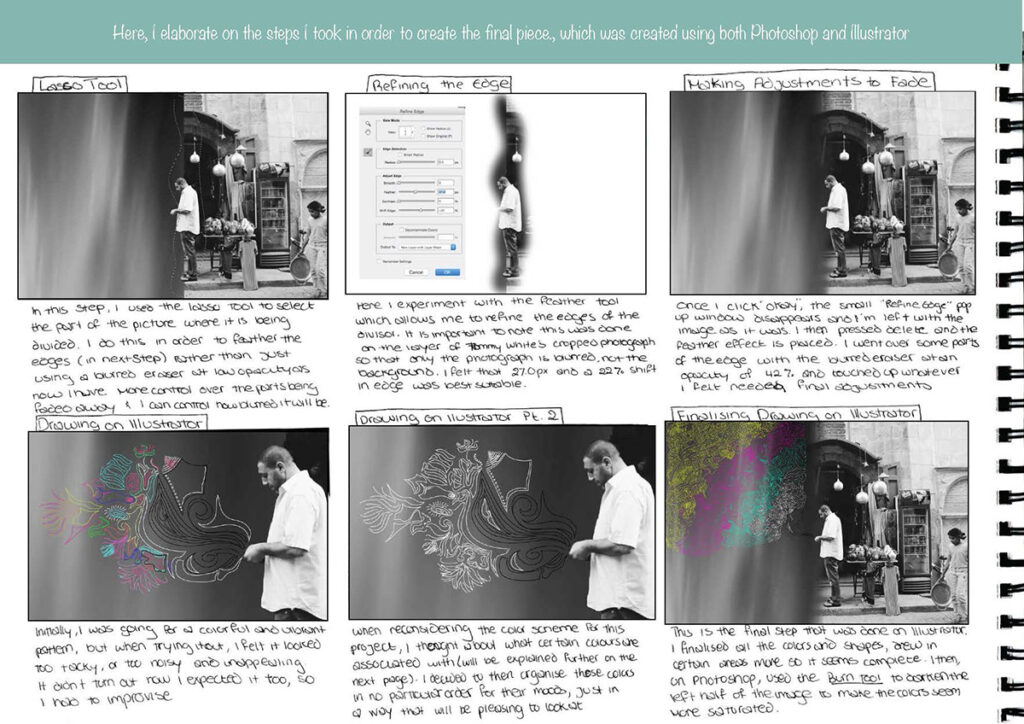
Review the criteria and document research to inform the journey.
The IB Visual Arts Guide offers a detailed description of each criterion and various markbands to consider.
Like with the Comparative Study, academic honesty is required but not evaluated. To start with, be sure to review your school’s referencing style (MLA, APA, etc.) with your students. Image citations need to include the title, artist, date, and medium. Your students will also need to label their own artworks to avoid confusion. Establish citation expectations at the beginning of the course so students form healthy referencing habits. If students forget to cite sources in their visual journals, they can include a bibliography at the end.
Be aware of “double-dipping.” This term refers to using the same work for two different assessments. Students cannot share images of resolved artworks from their Exhibition assessment in their Process Portfolio. If students fail to follow this guideline in the examination process, their work will be flagged for review by Lead Examiners.
Help your students use visual journaling as an essential part of their artistic process with these five strategies.
In all likelihood, the Process Portfolio criteria won’t puzzle or surprise you. They parallel Studio Thinking’s Eight Habits of Mind and many of the competencies you would find in a successful artistic practice. Let’s look at how holistic habits for visual journaling can support student success.
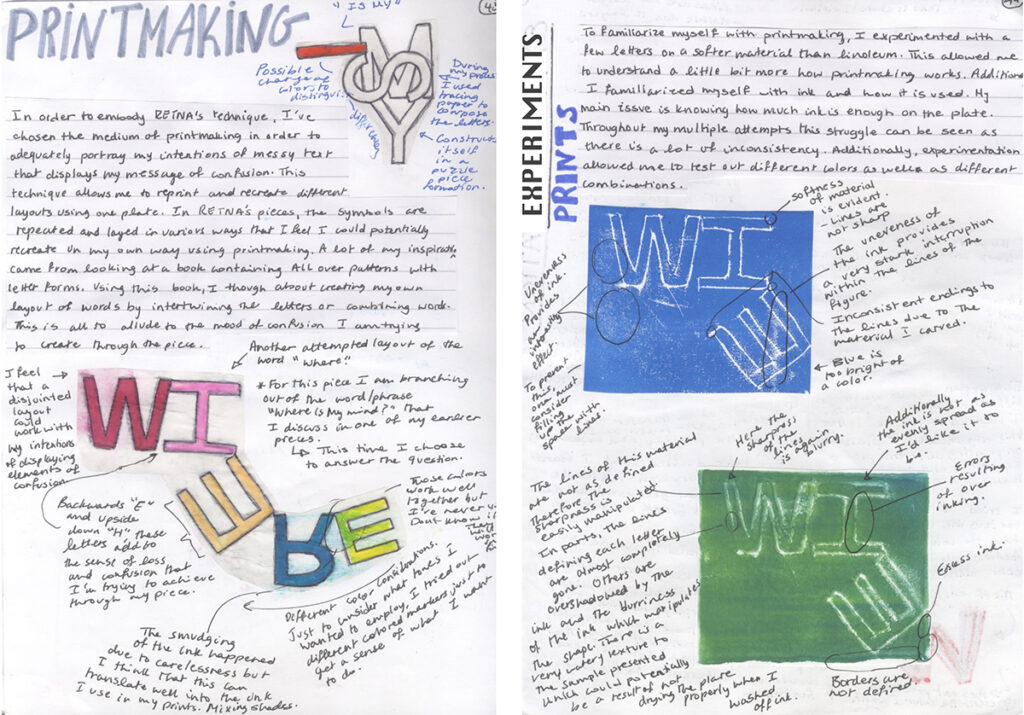
1. Explain the “why.”
At first, students may miss the point of keeping a visual journal. When you urge them to work in their visual journals, they may ask, “Why is this important?” It can leave you feeling like a nag. When you don’t address the “why,” activities tend to feel more like homework exercises than enriching experiences.
How can an artist improve if they don’t experiment with techniques or explore new materials? While the means for experimentation will be unique to each artist, the same is true for students. Look at visual journals like a laboratory for artists.
Kick-start the conversation with your students. Look at visual journal examples and approaches together. Leonardo da Vinci’s notebooks offer a technical process. Edward Hopper created storyboard ideas for his famous piece, Nighthawks, and Frida Kahlo experimented with color and text. David Morales Hernandez and other contemporary artists’ sketchbooks can heighten students’ interests. Your students may also enjoy seeing sketchbooks by other students, like the ones in the Student Art Guide.
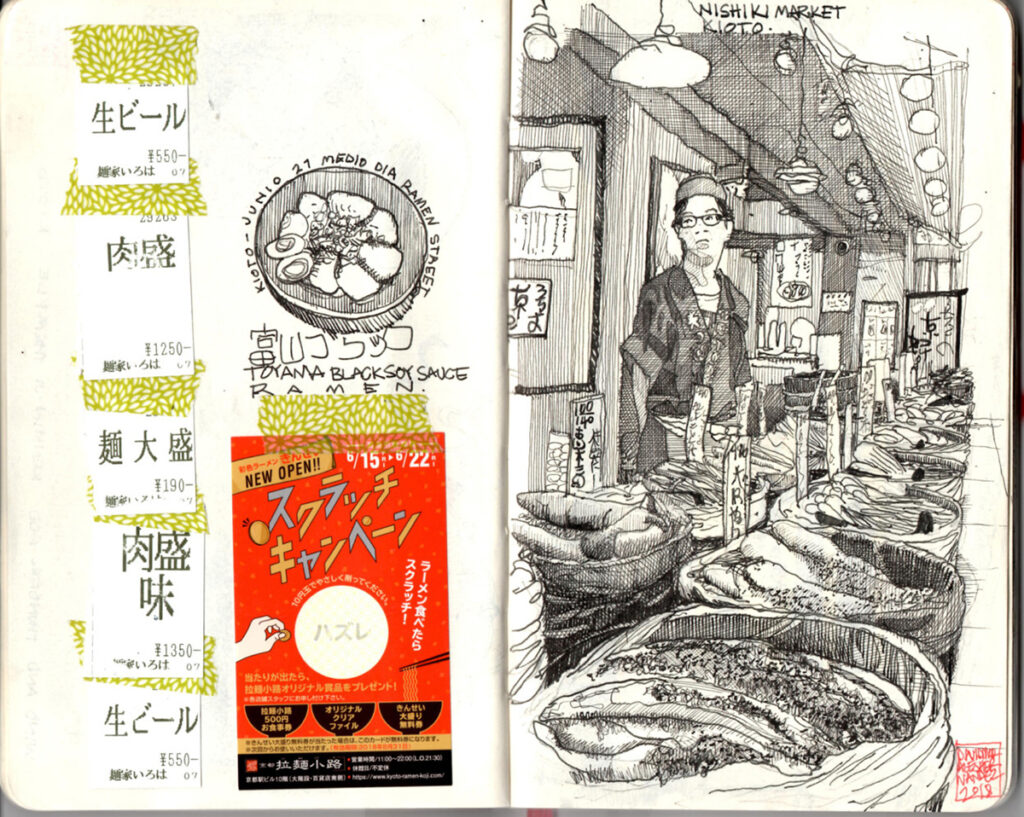
2. Schedule regular times for working in visual journals.
Often, visual journals are used solely for homework. However, students will need your support to remember to document and record their learning process. Make space to build in routine visual journaling activities. You may choose to allocate the first ten minutes of a block schedule or carve out twenty minutes at the start of every week.
You are encouraged to structure this collective class time for in-process check-ins. Students can conduct artist research, reflect at the end of a project, or brainstorm new ideas. The Process Portfolio will need much more than half an hour per week. Yet, providing this structured time can enhance and encourage deeper thinking.
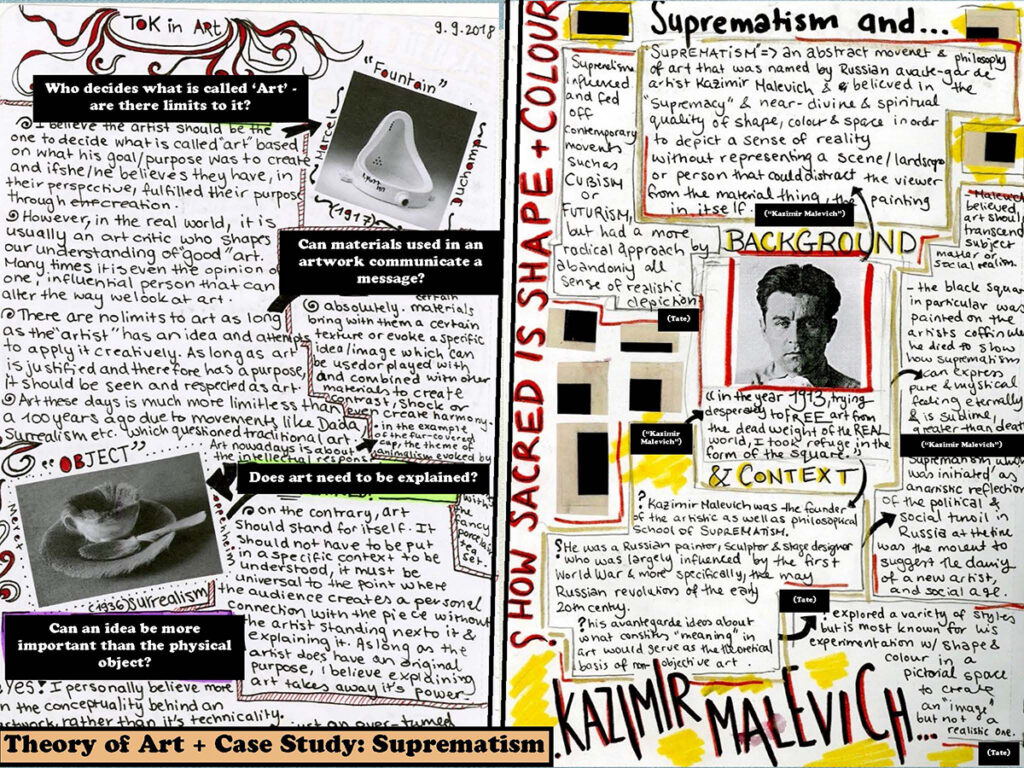
3. Create visual journal prompts to spark new ideas and shake up the artistic process.
During your scheduled visual journaling time, introduce visual journal prompts. Your students may re-energize and improve their problem-solving with a little prompting. Offer students a menu of reflective questions or artists’ works as a stimulus. Prompts can introduce new pathways for experimenting with materials. Prompts are especially helpful when students need support coming up with new ideas. Customized project prompts can help your students move away from clichés to develop more complex ideas.
Here are several resources to consider:
- Exploring Visual Journals at the Secondary Level Pack in PRO Learning
- How to Get Your Students to Enjoy Visual Journaling
- Four Ways to Use Visual Journaling to Support Advanced Artists
- 6 Easy Ways to Incorporate Text in Your Visual Journal
- A Surefire Way to Get Your Students Excited About Sketchbooks
- How to Make Sketchbooks a Vital Part of Your Classroom
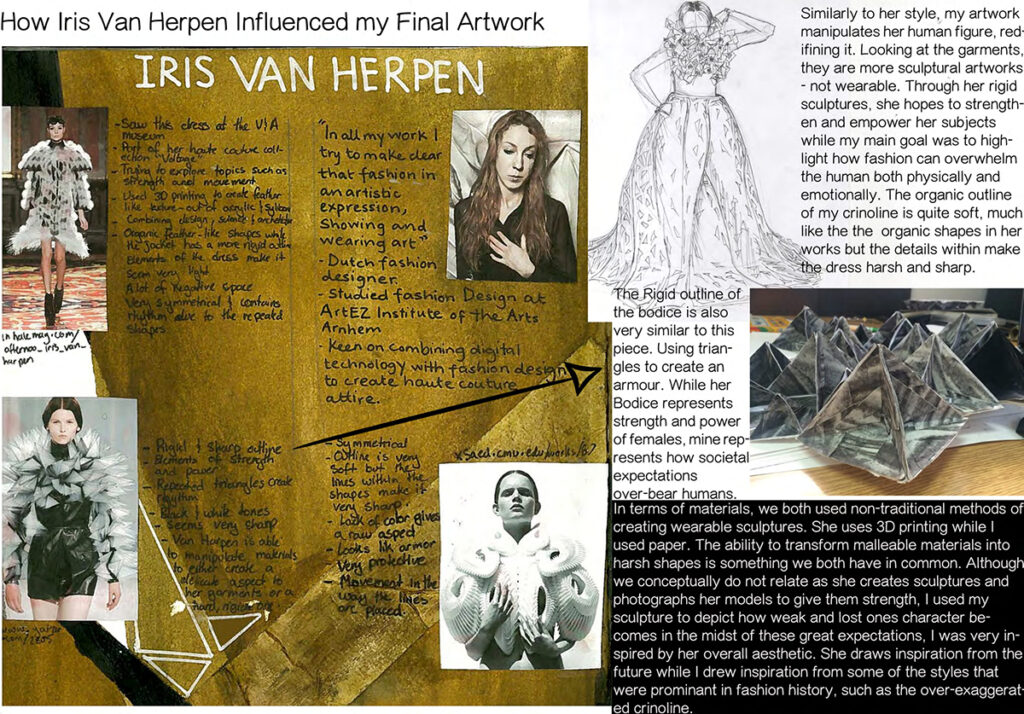
4. Observe, analyze, and discuss artwork to improve your students’ art vocabulary and visual literacy.
The more often you look at art with your students, the better! Building in art analysis as a visual journaling activity will help students form links between their work and other artists’ work. Looking at artworks is akin to reading books in an English class. The more a student reads, the better a writer they will become. Further discussions can support students’ ideas for the Exhibition and Comparative Study.
Be sure to review fundamental concepts with students, including the elements and principles of art. Like the Feldman Method, art analysis methods will allow students to apply art vocabulary. Check out 3 Helpful Elements and Principles Downloads to review these concepts. Model and guide your students to use vocabulary accurately. Print a copy of the Glossary from FLEX Curriculum for your classroom, and encourage your students to seek out new terms.
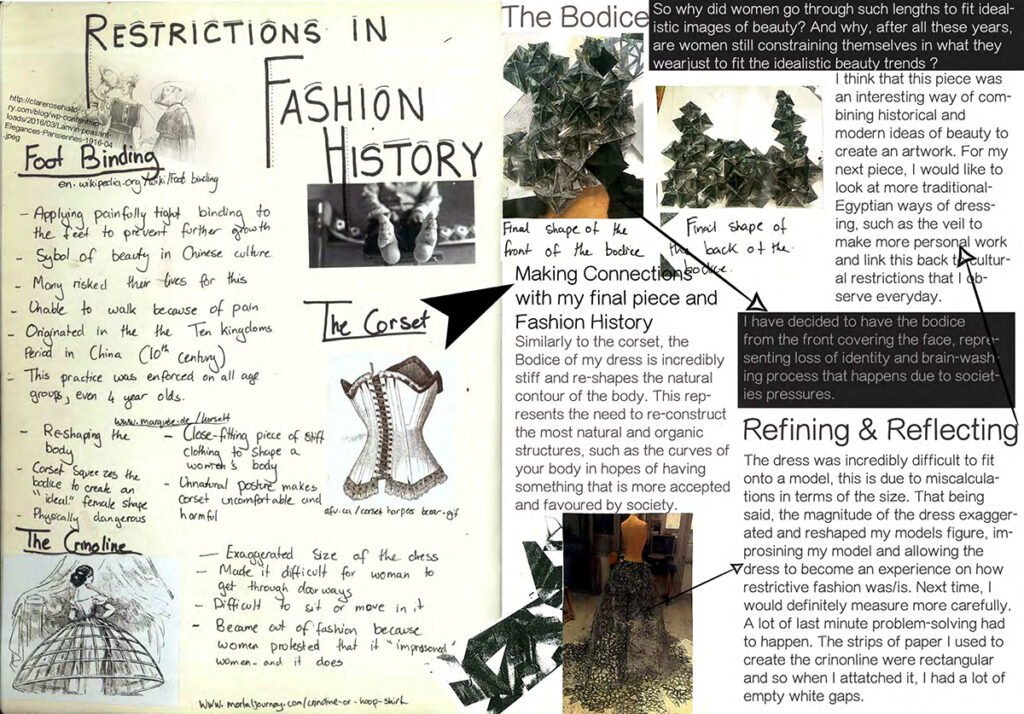
5. Document everything and stay organized.
Walk your students through best practices for taking quality photos. Understanding how to take a quality photo will help students document their visual journals with the best lighting and visibility. Encourage and guide your students to develop a digital filing system for storing their images from day one. An organized system of well-labeled files can better support your students when they compile their work into digital screens.
As students work on processes within their visual journals, they may not have immediate access to a printer. Sticky notes work well as placeholders. Students can tack these onto their visual journals and note the visual elements they plan to glue in later. Then, they can write some notes off to the side to document their thinking at the moment.
While these tips and tricks center around the Process Portfolio, these practices can apply to all advanced students. As students become independent, a visual journal practice can develop meaningful ideas and connections on their terms. Eventually, your students will have a body of work showcasing their thinking and development in profound ways. Students will own their learning due to their investment in the process, and it will feel so rewarding.
What routines do you have in place for visual journaling?
How can you better support your students’ development through visual journaling practices?
What visual journaling tips would you add to this list?
Magazine articles and podcasts are opinions of professional education contributors and do not necessarily represent the position of the Art of Education University (AOEU) or its academic offerings. Contributors use terms in the way they are most often talked about in the scope of their educational experiences.

